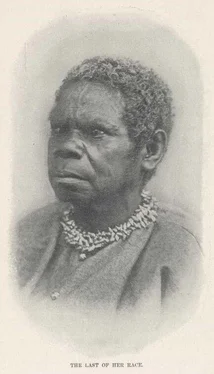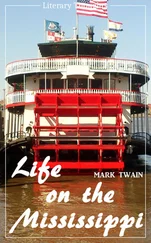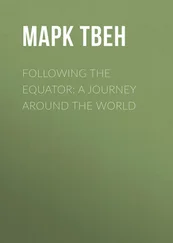Mark Twain - Following the Equator
Здесь есть возможность читать онлайн «Mark Twain - Following the Equator» весь текст электронной книги совершенно бесплатно (целиком полную версию без сокращений). В некоторых случаях можно слушать аудио, скачать через торрент в формате fb2 и присутствует краткое содержание. Год выпуска: 2004, Жанр: Классическая проза, Юмористическая проза, на английском языке. Описание произведения, (предисловие) а так же отзывы посетителей доступны на портале библиотеки ЛибКат.
- Название:Following the Equator
- Автор:
- Жанр:
- Год:2004
- ISBN:нет данных
- Рейтинг книги:3 / 5. Голосов: 1
-
Избранное:Добавить в избранное
- Отзывы:
-
Ваша оценка:
- 60
- 1
- 2
- 3
- 4
- 5
Following the Equator: краткое содержание, описание и аннотация
Предлагаем к чтению аннотацию, описание, краткое содержание или предисловие (зависит от того, что написал сам автор книги «Following the Equator»). Если вы не нашли необходимую информацию о книге — напишите в комментариях, мы постараемся отыскать её.
Following the Equator — читать онлайн бесплатно полную книгу (весь текст) целиком
Ниже представлен текст книги, разбитый по страницам. Система сохранения места последней прочитанной страницы, позволяет с удобством читать онлайн бесплатно книгу «Following the Equator», без необходимости каждый раз заново искать на чём Вы остановились. Поставьте закладку, и сможете в любой момент перейти на страницу, на которой закончили чтение.
Интервал:
Закладка:
—Pudd'nhead Wilsons's New Calendar
There isn't a Parallel of Latitude but thinks it would have been the Equator if it had had its rights.
—Pudd'nhead Wilson's New Calendar.
An Absorbing Novelty—The Kimberley Diamond Mines—Discovery of Diamonds—The Wronged Stranger—Where the Gems Are—A Judicious Change of Boundary—Modern Machinery and Appliances—Thrilling Excitement in Finding a Diamond—Testing a Diamond—Fences—Deep Mining by Natives in the Compound—Stealing—Reward for the Biggest Diamond—A Fortune in Wine—The Great Diamond—Office of the De Beer Co.—Sorting the Gems—Cape Town—The Most Imposing Man in British Provinces—Various Reasons for his Supremacy—How He Makes Friends
Next to Mr. Rhodes, to me the most interesting convulsion of nature in South Africa was the diamond-crater. The Rand gold fields are a stupendous marvel, and they make all other gold fields small, but I was not a stranger to gold-mining; the veldt was a noble thing to see, but it was only another and lovelier variety of our Great Plains; the natives were very far from being uninteresting, but they were not new; and as for the towns, I could find my way without a guide through the most of them because I had learned the streets, under other names, in towns just like them in other lands; but the diamond mine was a wholly fresh thing, a splendid and absorbing novelty. Very few people in the world have seen the diamond in its home. It has but three or four homes in the world, whereas gold has a million. It is worth while to journey around the globe to see anything which can truthfully be called a novelty, and the diamond mine is the greatest and most select and restricted novelty which the globe has in stock.
The Kimberley diamond deposits were discovered about 1869, I think. When everything is taken into consideration, the wonder is that they were not discovered five thousand years ago and made familiar to the African world for the rest of time. For this reason the first diamonds were found on the surface of the ground. They were smooth and limpid, and in the sunlight they vomited fire. They were the very things which an African savage of any era would value above every other thing in the world excepting a glass bead. For two or three centuries we have been buying his lands, his cattle, his neighbor, and any other thing he had for sale, for glass beads and so it is strange that he was indifferent to the diamonds—for he must have picked them up many and many a time. It would not occur to him to try to sell them to whites, of course, since the whites already had plenty of glass beads, and more fashionably shaped, too, than these; but one would think that the poorer sort of black, who could not afford real glass, would have been humbly content to decorate himself with the imitation, and that presently the white trader would notice the things, and dimly suspect, and carry some of them home, and find out what they were, and at once empty a multitude of fortune-hunters into Africa. There are many strange things in human history; one of the strangest is that the sparkling diamonds laid there so long without exciting any one's interest.
The revelation came at last by accident. In a Boer's hut out in the wide solitude of the plains, a traveling stranger noticed a child playing with a bright object, and was told it was a piece of glass which had been found in the veldt. The stranger bought it for a trifle and carried it away; and being without honor, made another stranger believe it was a diamond, and so got $125 out of him for it, and was as pleased with himself as if he had done a righteous thing. In Paris the wronged stranger sold it to a pawnshop for $10,000, who sold it to a countess for $90,000, who sold it to a brewer for $800,000, who traded it to a king for a dukedom and a pedigree, and the king "put it up the spout."—I know these particulars to be correct.

The news flew around, and the South African diamond-boom began. The original traveler—the dishonest one—now remembered that he had once seen a Boer teamster chocking his wagon-wheel on a steep grade with a diamond as large as a football, and he laid aside his occupations and started out to hunt for it, but not with the intention of cheating anybody out of $125 with it, for he had reformed.
We now come to matters more didactic. Diamonds are not imbedded in rock ledges fifty miles long, like the Johannesburg gold, but are distributed through the rubbish of a filled-up well, so to speak. The well is rich, its walls are sharply defined; outside of the walls are no diamonds. The well is a crater, and a large one. Before it had been meddled with, its surface was even with the level plain, and there was no sign to suggest that it was there. The pasturage covering the surface of the Kimberley crater was sufficient for the support of a cow, and the pasturage underneath was sufficient for the support of a kingdom; but the cow did not know it, and lost her chance.
The Kimberley crater is roomy enough to admit the Roman Coliseum; the bottom of the crater has not been reached, and no one can tell how far down in the bowels of the earth it goes. Originally, it was a perpendicular hole packed solidly full of blue rock or cement, and scattered through that blue mass, like raisins in a pudding, were the diamonds. As deep down in the earth as the blue stuff extends, so deep will the diamonds be found.
There are three or four other celebrated craters near by—a circle three miles in diameter would enclose them all. They are owned by the De Beers Company, a consolidation of diamond properties arranged by Mr. Rhodes twelve or fourteen years ago. The De Beers owns other craters; they are under the grass, but the De Beers knows where they are, and will open them some day, if the market should require it.
Originally, the diamond deposits were the property of the Orange Free State; but a judicious "rectification" of the boundary line shifted them over into the British territory of Cape Colony. A high official of the Free State told me that the sum of $400,000 was handed to his commonwealth as a compromise, or indemnity, or something of the sort, and that he thought his commonwealth did wisely to take the money and keep out of a dispute, since the power was all on the one side and the weakness all on the other. The De Beers Company dig out $400,000 worth of diamonds per week, now. The Cape got the territory, but no profit; for Mr. Rhodes and the Rothschilds and the other De Beers people own the mines, and they pay no taxes.

In our day the mines are worked upon scientific principles, under the guidance of the ablest mining-engineering talent procurable in America. There are elaborate works for reducing the blue rock and passing it through one process after another until every diamond it contains has been hunted down and secured. I watched the "concentrators" at work big tanks containing mud and water and invisible diamonds—and was told that each could stir and churn and properly treat 300 car-loads of mud per day 1,600 pounds to the car-load—and reduce it to 3 car-loads of slush. I saw the 3 carloads of slush taken to the "pulsators" and there reduced to a quarter of a load of nice clean dark-colored sand. Then I followed it to the sorting tables and saw the men deftly and swiftly spread it out and brush it about and seize the diamonds as they showed up. I assisted, and once I found a diamond half as large as an almond. It is an exciting kind of fishing, and you feel a fine thrill of pleasure every time you detect the glow of one of those limpid pebbles through the veil of dark sand. I would like to spend my Saturday holidays in that charming sport every now and then. Of course there are disappointments. Sometimes you find a diamond which is not a diamond; it is only a quartz crystal or some such worthless thing. The expert can generally distinguish it from the precious stone which it is counterfeiting; but if he is in doubt he lays it on a flatiron and hits it with a sledgehammer. If it is a diamond it holds its own; if it is anything else, it is reduced to powder. I liked that experiment very much, and did not tire of repetitions of it. It was full of enjoyable apprehensions, unmarred by any personal sense of risk. The De Beers concern treats 8,000 carloads—about 6,000 tons—of blue rock per day, and the result is three pounds of diamonds. Value, uncut, $50,000 to $70,000. After cutting, they will weigh considerably less than a pound, but will be worth four or five times as much as they were before.
Читать дальшеИнтервал:
Закладка:
Похожие книги на «Following the Equator»
Представляем Вашему вниманию похожие книги на «Following the Equator» списком для выбора. Мы отобрали схожую по названию и смыслу литературу в надежде предоставить читателям больше вариантов отыскать новые, интересные, ещё непрочитанные произведения.
Обсуждение, отзывы о книге «Following the Equator» и просто собственные мнения читателей. Оставьте ваши комментарии, напишите, что Вы думаете о произведении, его смысле или главных героях. Укажите что конкретно понравилось, а что нет, и почему Вы так считаете.











